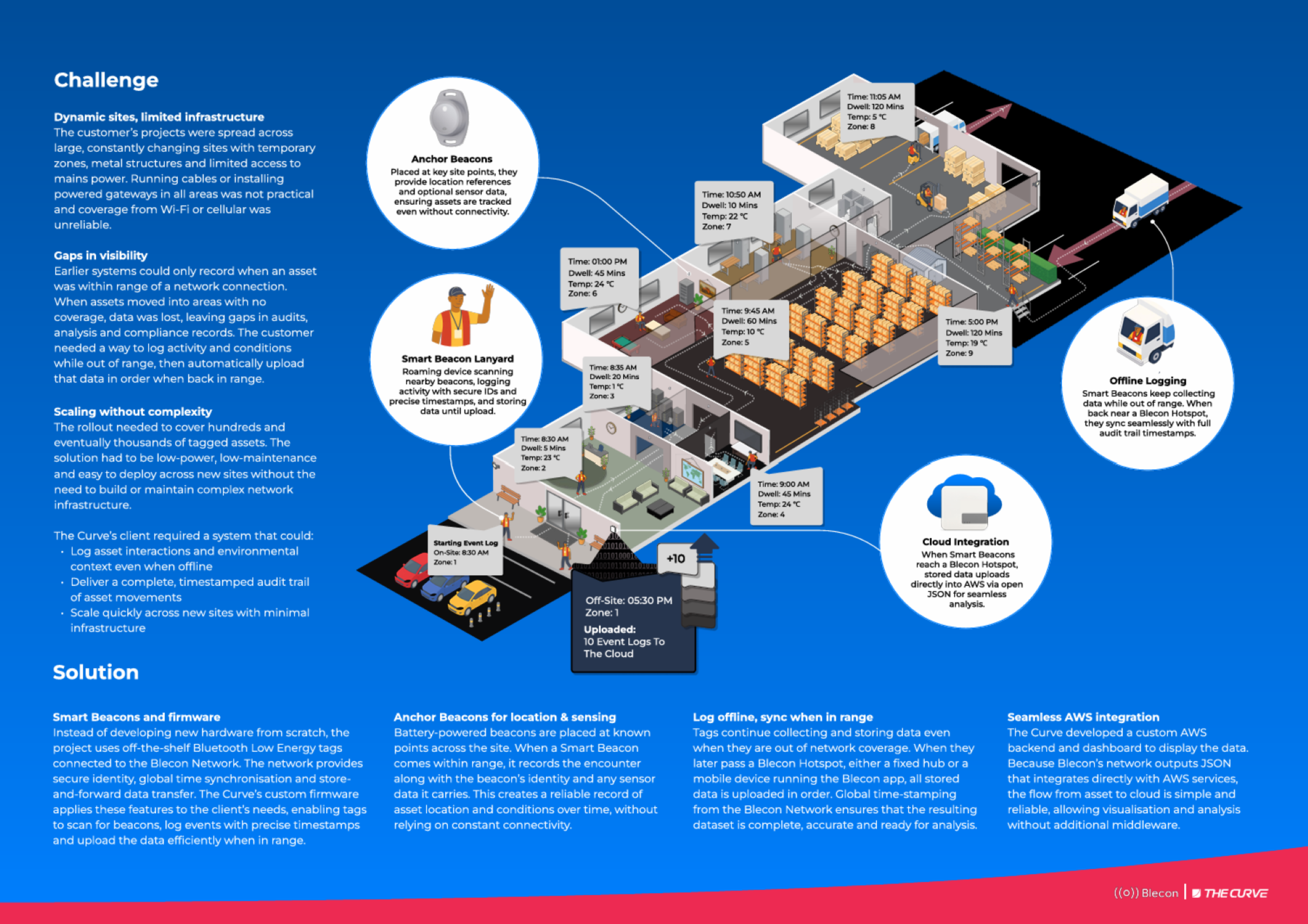Bluetooth Low Energy (BLE) Solutions
Low Cost, Low Energy, High Impact
What is Bluetooth Low Energy
The Bluetooth Low Energy (BLE) communication protocol, also known as Bluetooth Smart is specifically designed to be low-power and optimal for short range communication between devices. To achieve this low power communication compared to traditional Bluetooth protocol BLE devices remain in a sleep state or standby mode, only connecting briefly at regular intervals in order to transmit data.
We utilise Bluetooth Low Energy communication for a variety of development projects depending on the unique aims and technical aspects involved, from reporting data of manufacturing machines to health and fitness devices, we ensure low cost, low energy solutions for your projects.
The Benefits of Bluetooth Low Energy Technology
Smart Beacon Asset Tracking in Distributed Environments
Blecon and The Curve deliver Smart Beacon-powered asset visibility with minimal setup and maximum flexibility, even in low-connectivity environments.
Introduction
While planning a major upgrade to their asset tracking capabilities, a leading infrastructure company set out to overcome the challenges of operating in large, fast-changing sites with patchy connectivity and limited access to power. The business needed a reliable way to record the location and condition of key assets throughout the day, even when they were offline for long periods. Their previous approaches using Wi-Fi and cellular had fallen short, with coverage gaps, high costs and added complexity in deployment. Working in partnership, Blecon and The Curve delivered a Smart Beacon-based solution that logs accurate, timestamped data as assets move around sites and automatically uploads it when they come near gateways. By combining Blecon’s cloud-native Beacon network with The Curve’s firmware development and AWS integration expertise, the project shows how enterprises can gain full asset visibility without the burden of building and maintaining complex network infrastructure.

Results & Strategic Impact
The system is currently being utilised on active sites and is already delivering tangible benefits.
Complete data - Assets generate a continuous record of where and when they were seen, even in areas with no network coverage. Data captured offline is uploaded automatically when connectivity is available, creating a complete activity history for audits.
Fast deployment with minimal infrastructure - New sites require only a small number of Blecon Hubs or mobile hotspots. Because devices do not need pairing and hotspots can be positioned sparingly, The Curve’s team can bring new locations online quickly: deploy anchor beacons, activate tags and let the system handle data uploads as soon as a hotspot is in range.
Low touch, long-life hardware - Battery-powered tags and beacons are designed to operate for extended periods without replacement. This removes the need for wiring, frequent maintenance or on-site technical support, making the model well suited to remote or constantly changing sites.
Scalable by design - The architecture supports hundreds to thousands of devices with secure identity, centralised management and over-the-air firmware updates. It is built to scale as deployment expands, without adding operational complexity.
The collaboration between Blecon and The Curve shows how Smart Beacon technology can be deployed quickly, managed with minimal overhead and scaled cost effectively. By combining The Curve’s full-stack engineering with Blecon’s Bluetooth-to-cloud network, the client has a resilient asset visibility platform that is ready to support additional use cases in the future. This approach is relevant to any organisation needing to track asset movements or environmental conditions in places where power, connectivity or cost make other solutions impractical. It also demonstrates how Smart Beacons can provide a competitive advantage by enabling rapid, scalable deployment without the complexity of traditional networks.
Contact us through the form below and get started with your Bluetooth project today!
Reach out to us today
We're always eager to connect and explore how we can contribute to your journey. Reach out to us and let us know how we can assist you.